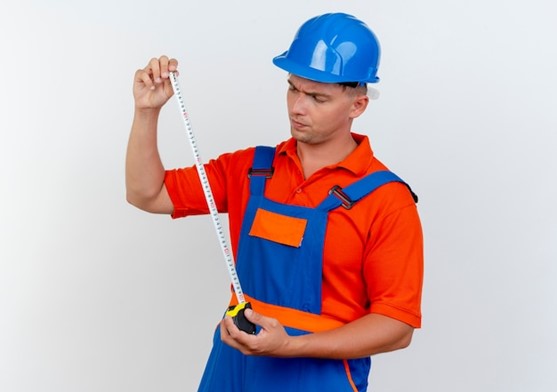WHS Problem Solving in the Northern Territory is a critical aspect of ensuring workplace health and safety standards are met. The Northern Territory, like any other region, faces its own unique challenges when it comes to maintaining a safe work environment. WHS Problem Solving involves identifying potential hazards, assessing risks, and implementing effective solutions to prevent accidents and injuries.
When it comes to workplace safety, the role of a WHS committee is crucial. A well-functioning committee can help identify and solve workplace problems efficiently and effectively. To tackle these issues like a pro, there are five key strategies that the committee should consider.
Firstly, it is essential for the WHS committee to think about the specific WHS problem at hand. By thoroughly understanding the issue, the committee can develop targeted solutions that address the root cause. This requires conducting thorough research, gathering data, and consulting with relevant stakeholders.
Secondly, the committee should employ problem solving techniques that are recognised and recommended by the Northern Territory’s WHS guidelines. By adhering to established frameworks, such as the incident investigation process or risk assessment methodologies, the committee can ensure a systematic and comprehensive approach to problem solving.
Furthermore, effective communication is crucial for successful problem solving. The WHS committee should encourage open and honest dialogue among all members. This allows for diverse perspectives and ideas to be shared, leading to innovative solutions that may not have been considered otherwise.
In addition to communication, collaboration is key. The committee should work together as a team, leveraging each member’s unique skills and expertise. By pooling their resources and knowledge, the committee can develop well-rounded and practical solutions that address workplace problems effectively.
Lastly, continuous improvement is essential for long-term success. The WHS committee should regularly evaluate the effectiveness of their solutions and make necessary adjustments as needed. This ongoing assessment ensures that workplace problems are not only solved promptly but also prevented from recurring in the future.
Solve Workplace Problems Like a Pro
Workplace Health and Safety (WHS) committees are a vital part of any Northern Territory organisation. Their role is to identify and assess workplace hazards and risks, develop and implement policies and procedures to prevent accidents and injuries, and promote a safe and healthy work environment.
One of the most critical aspects of a WHS committee’s work is problem solving. WHS committees must be able to identify and address workplace problems effectively. In this article, we will explore five ways your WHS committee can solve workplace problems like a pro.
Unlock your problem solving potential today with our HBDI assessment, tailored training, and insights into your thinking preferences. Let’s elevate your skills in Northern Territory and beyond. Join us now!
Understanding WHS Problem Solving
Effective problem solving requires a structured and systematic approach. WHS committees need to be able to identify and analyse workplace problems, develop and implement solutions, and evaluate their effectiveness.
One of the most effective problem solving models is the Wholebrain model. This model is based on the concept that every individual has a unique thinking style. The Wholebrain model identifies four different thinking preferences: analytical, practical, relational, and experimental.
By understanding the thinking preferences of your WHS committee members, you can improve communication, collaboration, and problem solving within the team.
Unlock your problem solving potential today with our HBDI assessment and training based on your thinking preferences. Explore the Northern Territory like never before with our expert guidance. Understand how to elevate your skills!
Identifying Thinking Preferences within Your WHS Committee
To identify the thinking preferences of your WHS committee members, you can use the Herrmann Brain Dominance Instrument (HBDI). This instrument measures an individual’s thinking preferences across four quadrants: analytical, sequential, interpersonal, and imaginative.
By understanding the thinking preferences of your WHS committee members, you can tailor your problem solving approach to the strengths and weaknesses of the team. For example, if your team has a high preference for analytical thinking, you may want to focus on data analysis and evidence-based decision-making.
Using HBDI to Enhance Problem Solving within Your WHS Committee
Once you have identified the thinking preferences of your WHS committee members, you can use this information to enhance problem solving within the team. For example, you can:
- Encourage diverse thinking: By understanding the thinking preferences of your team members, you can encourage diverse thinking and ideas. This can lead to more creative and effective problem solving.
- Tailor communication: Different thinking preferences require different communication styles. For example, analytical thinkers may prefer detailed data and analysis, while imaginative thinkers may prefer visual aids and metaphors.
- Assign tasks based on strengths: By assigning tasks based on the strengths and preferences of your team members, you can improve the efficiency and effectiveness of your problem solving process.
WHS Committee Can Solve Workplace Problems Like a Pro
- Conduct regular workplace inspections: Regular inspections can help identify potential hazards and risks before they become serious problems. Inspections should be conducted by trained members of the WHS committee and should be documented and reported to management.
- Encourage reporting of hazards and incidents: Employees should be encouraged to report hazards and incidents as soon as they occur. This can help prevent further injuries or accidents and can provide valuable information for problem-solving.
- Develop and implement policies and procedures: WHS committees should develop and implement policies and procedures to prevent workplace hazards and risks. These policies should be communicated to all employees and should be reviewed regularly to ensure they remain effective.
- Provide training and education: WHS committees should provide training and education to employees on how to identify and prevent workplace hazards and risks. This can help improve overall safety and prevent accidents and injuries.
- Evaluate and improve: WHS committees should regularly evaluate their problem-solving strategies and make improvements as necessary. This can help ensure that the committee is effective in identifying and addressing workplace problems.
Case Studies of Successful WHS Problem-Solving: Northern Territory
One example of successful WHS problem-solving is a manufacturing company that identified a high number of injuries related to lifting heavy objects. The WHS committee conducted a workplace inspection and identified that employees were not using proper lifting techniques.
The committee developed and implemented a training program on proper lifting techniques, and the number of injuries related to lifting heavy objects decreased significantly.
Measuring the Effectiveness of Your WHS Problem Solving Strategies
It is essential to measure the effectiveness of your WHS problem-solving strategies. This can be done by tracking the number of workplace incidents and injuries over time. If the number of incidents and injuries decreases, this is a good indicator that your problem-solving strategies are effective.
Common Challenges Faced by WHS Committees and How to Overcome Them
One common challenge faced by WHS committees is resistance to change. Some employees may be resistant to new policies and procedures or may be unwilling to participate in training and education programs.
To overcome this challenge, WHS committees should communicate the benefits of the changes and involve employees in the problem-solving process. By involving employees, they can feel ownership of the changes and are more likely to participate in the problem-solving process.
Conclusion and Key Takeaways
In conclusion, WHS committees play a vital role in promoting a safe and healthy work environment. Effective problem-solving is critical to the success of a WHS committee in Northern Territory or other states/territories. By understanding the thinking preferences of your team members, using problem-solving models such as the Wholebrain model, and implementing effective problem-solving strategies, your WHS committee can solve workplace problems like a pro.
Key takeaways from this article include the importance of regular workplace inspections, encouraging reporting of hazards and incidents, developing and implementing policies and procedures, providing training and education, and regularly evaluating and improving your problem-solving strategies.
By following these key takeaways, your WHS committee can promote a safe and healthy work environment for all employees. WHS committee plays a vital role in solving workplace problems. By thinking about the specific issues at hand, employing recognised problem-solving techniques, promoting effective communication and collaboration, and continuously seeking improvement, the committee can tackle these problems like professionals. This ultimately leads to safer and healthier work environments for all employees.
Northern Territory: Contact us today to learn how we can help your WHS committee solve workplace problems like a pro.












